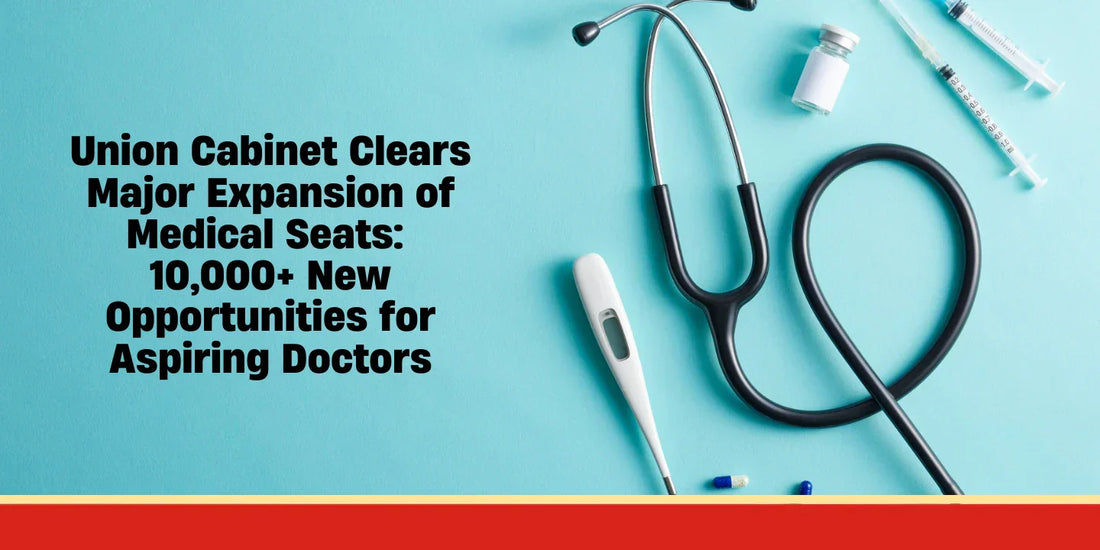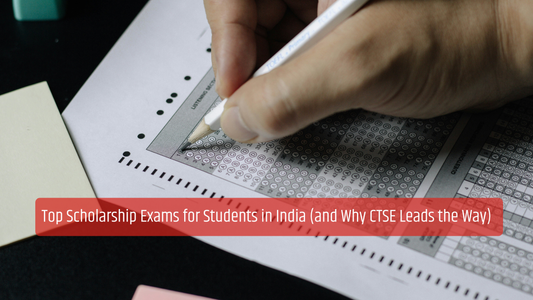In a landmark decision, the Union Cabinet, chaired by Prime Minister Narendra Modi, has approved Phase-III of the Centrally Sponsored Scheme (CSS) to upgrade government medical colleges, postgraduate institutes, and district hospitals across India.
This decision will create over 10,000 new medical seats including 5,023 MBBS seats and 5,000 postgraduate (PG) seats marking one of the largest single-phase expansions in India’s medical education sector.
The move underscores the government’s commitment to expanding access to affordable medical education while simultaneously strengthening the healthcare delivery system across urban and rural regions.
Why This Move Matters
India’s healthcare system has made impressive strides in the last decade. Yet, the demand for qualified doctors particularly in rural and underserved areas continues to outpace supply.
Currently, India has one doctor per 834 people, which is better than the World Health Organization’s (WHO) minimum requirement of 1:1000. However, this figure masks large regional disparities. While metro cities have a surplus of doctors, rural and tribal regions continue to face an acute shortage.
The addition of over 10,000 new medical seats is a major step toward addressing this imbalance. By focusing on government-run institutions, the government aims to make medical education more affordable and reduce dependence on expensive private colleges, where MBBS fees can range from ₹50 lakh to ₹1 crore.
Key Highlights of the Phase-III Expansion
The Phase-III CSS initiative will be implemented over the period 2025–26 to 2028–29, with an estimated financial outlay of ₹15,034.50 crore, shared between the Central and State Governments.
Funding Breakdown:
- Central Government: ₹10,303.20 crore
- State Governments: ₹4,731.30 crore
- Enhanced Cost Ceiling: ₹1.50 crore per seat
Unlike earlier phases that focused primarily on infrastructure creation, this phase emphasizes capacity optimization utilizing and upgrading existing facilities instead of constructing new ones.
This ensures that resources are efficiently used and that new seats are created faster and more sustainably.
Boost to MBBS and Postgraduate Education
Under this scheme, approximately 5,023 MBBS seats and 5,000 postgraduate seats will be added to existing medical institutions.
The expansion comes at a crucial time when India’s student-to-faculty ratio in medical colleges is improving, yet still below global standards. With more seats and faculty recruitment drives planned, this move will:
- Increase the number of qualified doctors and specialists.
- Strengthen medical education infrastructure.
- Encourage regional distribution of talent and resources.
India’s Medical Education Journey So Far
India has witnessed an extraordinary transformation in its medical education sector over the past decade:
- Medical Colleges: Increased from 387 in 2014 to over 808 in 2025, making India the world leader in number of medical colleges.
- MBBS Seats: Grew by 127%, from around 51,000 to 1.23 lakh annually.
- Postgraduate Seats: Expanded by 143%, from 31,000 to 75,000.
This consistent expansion reflects a long-term national strategy to make healthcare education universal, inclusive, and forward-looking.
The Bigger Picture: Addressing Regional Disparities
While India now produces more doctors than ever before, the geographical distribution of healthcare professionals remains uneven.
For example, states like Maharashtra, Tamil Nadu, and Karnataka have a dense network of medical institutions, while states in the Northeast, central, and tribal regions continue to face shortages.
By prioritizing government medical colleges and district hospitals for new seat creation, the government ensures that Tier-2 and Tier-3 cities benefit the most.
This decentralization not only helps students from smaller towns access medical education locally but also encourages young doctors to serve in their home regions a key factor in improving rural healthcare.
Strengthening Teaching & Training Quality
The scheme also includes provisions for:
- Faculty recruitment and upskilling programs in collaboration with AIIMS and state medical universities.
- Smart classrooms and simulation labs to improve hands-on learning.
- Integration of telemedicine and digital health records into the curriculum.
Experts believe these steps will ensure that the increase in seats doesn’t compromise on academic quality or clinical exposure.
According to Dr. Randeep Guleria, former Director of AIIMS Delhi, “Expanding seats is a great step, but ensuring high-quality mentorship and clinical training is equally important. The government’s focus on upgradation rather than expansion alone is a step in the right direction.”
Public and Expert Reactions
The announcement has received an overwhelmingly positive response from both medical aspirants and educators.
- Students and parents have welcomed the move as it increases the chances of securing a seat in a government institution, thus reducing the financial burden.
- Education experts highlight that the policy will also reduce the number of students going abroad for MBBS degrees a number that currently exceeds 20,000 each year.
However, experts also urge the government to focus on faculty recruitment and quality control mechanisms. Dr. Devi Shetty of Narayana Health commented, “India doesn’t just need more doctors; we need more well-trained, competent doctors. Expanding government seats must go hand-in-hand with faculty development and robust clinical exposure.”
Long-Term Vision: Towards Health for All
The government’s broader vision extends beyond seat expansion. This initiative is part of India’s National Health Policy 2017 and Ayushman Bharat framework, which aim to ensure universal access to quality healthcare by 2030.
By training more doctors within India, the policy aligns with the Make in India and Viksit Bharat 2047 missions creating a self-reliant healthcare ecosystem that reduces dependence on foreign-trained medical professionals.
Additionally, the increase in PG seats will strengthen specialized fields such as oncology, neurology, cardiology, and geriatrics areas where India still faces critical shortages.
Economic and Employment Impact
Apart from healthcare benefits, this decision is expected to generate thousands of new jobs from teaching staff and lab technicians to nursing and administrative personnel.
Medical education expansion contributes significantly to local economies. New seats mean more hostels, housing demand, cafeterias, and service infrastructure in smaller cities, promoting regional economic development.
Implementation Roadmap
The Ministry of Health and Family Welfare (MoHFW) will oversee implementation, coordinating with state governments and medical universities.
The rollout will occur in phases:
- Phase 1 (2025–26): Seat expansion in high-demand institutions with existing capacity.
- Phase 2 (2026–27): Infrastructure upgrades, faculty recruitment, and simulation lab setup.
- Phase 3 (2027–28): Inclusion of new districts and smaller government colleges.
- Final Phase (2028–29): Achievement of the full target of 10,023 seats.
Monitoring committees will ensure quality control and timely execution.
Challenges Ahead
Despite its potential, the initiative faces certain challenges:
- Faculty shortage: Many medical colleges operate with fewer teachers than prescribed by NMC norms.
- Infrastructure pressure: Rapid expansion could strain existing hospitals if not paired with facility upgrades.
- Regional coordination: Implementation requires strong cooperation between state governments and the Centre.
To address these, the government plans to introduce digital monitoring dashboards, centralized faculty recruitment, and incentive programs for rural postings.
Global Perspective
India’s move is attracting global attention, as the country already produces the highest number of medical graduates worldwide.
The World Health Organization (WHO) and UNESCO have praised India’s efforts in scaling medical education to meet population health needs. By 2030, India could potentially become a global hub for medical training, attracting international students especially from developing nations in Asia and Africa.
Conclusion
The Union Cabinet’s approval of over 10,000 new medical seats is more than a policy decision it’s a transformative investment in India’s future.
It bridges long-standing gaps in accessibility, affordability, and equity in healthcare education. It also reflects a vision where every aspiring doctor has an opportunity to learn, and every citizen has access to skilled healthcare professionals, no matter where they live.
If executed effectively, this initiative could mark the beginning of a new era in Indian medical education one that combines scale with quality, compassion with competence, and vision with action.










